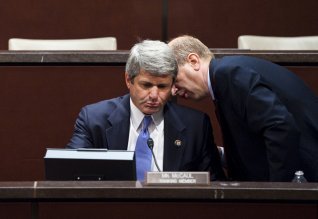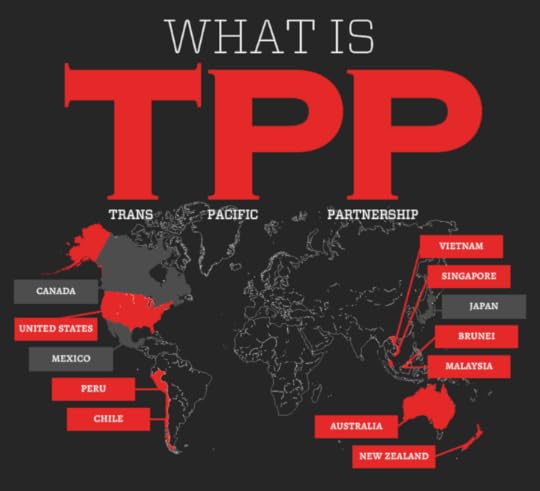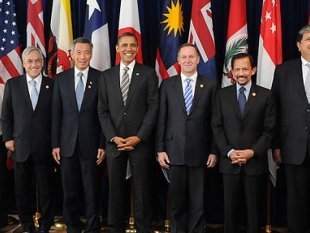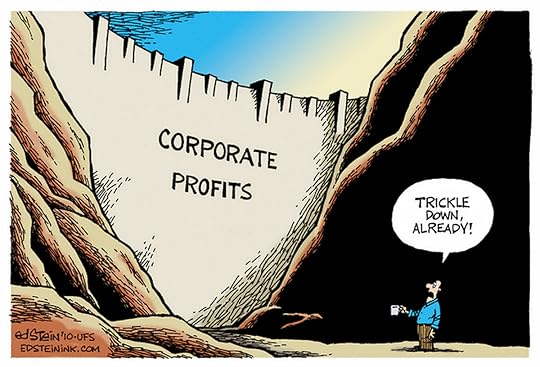Catherine Crier's Blog
April 23, 2013
ICYMI: PoliticsNation on April 22
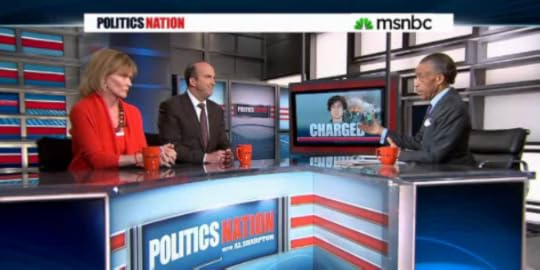
From PoliticsNation
Case builds against Dzhokhar Tsarnaev
Former prosecutors Catherine Crier and Kelly Currie break down the charages against the 19-year-old accused of the Boston Marathon bombings.
Visit NBCNews.com for breaking news, world news, and news about the economy

February 18, 2013
Happy Presidents’ Day: Read George Washington’s Farewell Address
Today our great country takes a day to remember all of the presidents who have led our country since its founding. In honor of George Washington’s birthday this Friday, the U.S. Senate will also read his farewell address. In this letter to “Friends and Citizens,” Washington warned that the forces of geographical sectionalism, political factionalism, and interference by foreign powers in the nation’s domestic affairs threatened the stability of the Republic. He urged Americans to subordinate sectional jealousies to common national interests.
Take some time either today or later this week to read Washington’s farewell address, and have a wonderful and joyous Presidents’ Day!
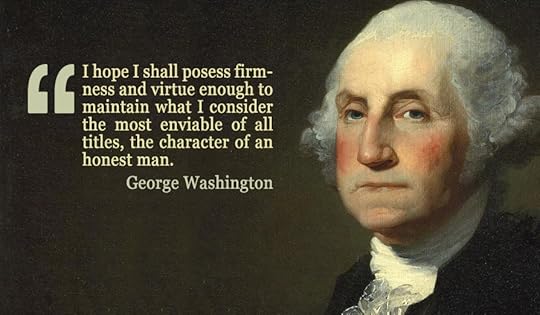
Washington’s Farewell Address
1796
Friends and Citizens:
The period for a new election of a citizen to administer the executive government of the United States being not far distant, and the time actually arrived when your thoughts must be employed in designating the person who is to be clothed with that important trust, it appears to me proper, especially as it may conduce to a more distinct expression of the public voice, that I should now apprise you of the resolution I have formed, to decline being considered among the number of those out of whom a choice is to be made.
I beg you, at the same time, to do me the justice to be assured that this resolution has not been taken without a strict regard to all the considerations appertaining to the relation which binds a dutiful citizen to his country; and that in withdrawing the tender of service, which silence in my situation might imply, I am influenced by no diminution of zeal for your future interest, no deficiency of grateful respect for your past kindness, but am supported by a full conviction that the step is compatible with both.
The acceptance of, and continuance hitherto in, the office to which your suffrages have twice called me have been a uniform sacrifice of inclination to the opinion of duty and to a deference for what appeared to be your desire. I constantly hoped that it would have been much earlier in my power, consistently with motives which I was not at liberty to disregard, to return to that retirement from which I had been reluctantly drawn. The strength of my inclination to do this, previous to the last election, had even led to the preparation of an address to declare it to you; but mature reflection on the then perplexed and critical posture of our affairs with foreign nations, and the unanimous advice of persons entitled to my confidence, impelled me to abandon the idea.
I rejoice that the state of your concerns, external as well as internal, no longer renders the pursuit of inclination incompatible with the sentiment of duty or propriety, and am persuaded, whatever partiality may be retained for my services, that, in the present circumstances of our country, you will not disapprove my determination to retire.
The impressions with which I first undertook the arduous trust were explained on the proper occasion. In the discharge of this trust, I will only say that I have, with good intentions, contributed towards the organization and administration of the government the best exertions of which a very fallible judgment was capable. Not unconscious in the outset of the inferiority of my qualifications, experience in my own eyes, perhaps still more in the eyes of others, has strengthened the motives to diffidence of myself; and every day the increasing weight of years admonishes me more and more that the shade of retirement is as necessary to me as it will be welcome. Satisfied that if any circumstances have given peculiar value to my services, they were temporary, I have the consolation to believe that, while choice and prudence invite me to quit the political scene, patriotism does not forbid it.

January 10, 2013
Collective Net Worth of Congress Increased $390 Million from 2008 to 2012
Underreported… I’ll say. At the end of 2012, the editors of Time Magazine posted their picks for most overlooked news of the year, and I think the fourth-most underreported story deserves far more attention than it initially received.
According to Roll Call, the collective net worth of members of the U.S. Senate and House of Representatives rose to $2.04 billion in 2012, up from $1.65 billion in 2008—an increase that averages out to nearly three quarters of a million dollars per congress member. Read the full story below, then share your thoughts.
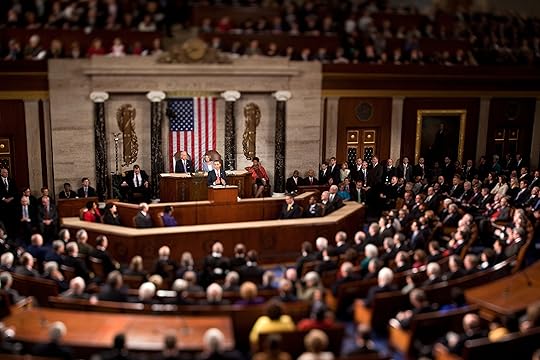
From Roll Call
And Congress’ Rich Get Richer
Net Worth of Lawmakers Up 25 Percent in Two Years, Analysis DemonstratesBy Paul Singer and Jennifer Yachnin
Nov. 1, 2011, Midnight
Members of Congress had a collective net worth of more than $2 billion in 2010, a nearly 25 percent increase over the 2008 total, according to a Roll Call analysis of Members’ financial disclosure forms.
Nearly 90 percent of that increase is concentrated in the 50 richest Members of Congress.
Two years ago, Roll Call found that the minimum net worth of House Members was slightly more than $1 billion; Senators had a combined minimum worth of $651 million for a Congressional total of $1.65 billion. Roll Call calculates minimum net worth by adding the minimum values of all reported assets and subtracting the minimum values of all reported liabilities.
According to financial disclosure forms filed by Members of Congress this year, the minimum net worth in the House has jumped to $1.26 billion, and Senate net worth has climbed to at least $784 million, for a Congressional total of $2.04 billion.
These wealth totals vastly underestimate the actual net worth of Members of Congress because they are based on an accounting system that does not include homes and other non-income-generating property, which is likely to tally hundreds of millions of uncounted dollars. In addition, Roll Call’s tally is based on the minimum values of assets reported by Members on their annual financial disclosure forms; the true values of those assets may be much higher.
While wealth overall is scattered fairly evenly between the two parties, there is an interesting divide in the two chambers. Democrats hold about 80 percent of the wealth in the Senate; Republicans control about 78 percent of the wealth in the House.
And as protesters around the country decry the supposed consolidation of wealth in America, the trend can be seen starkly in Congress, a comparison suggested by American Enterprise Institute visiting scholar Mark Perry. The 50 richest Members of Congress accounted for 78 percent of the net worth in the institution in 2008 ($1.29 billion of the $1.65 billion total); by 2010 the share of the 50 richest had risen to 80 percent ($1.63 billion of the $2.04 billion total). The pie of Congressional wealth got bigger, and the richest Members are getting a bigger slice.
But there is still plenty to go around. Overall, 219 Members of Congress reported having assets worth more than $1 million last year; subtracting the minimum value of their liabilities brings the total number of millionaires in Congress down to 196 — again not counting any value on their homes or other non-income-producing property. If one were to assume that every Member of Congress has $200,000 worth of equity in real estate, the total number of millionaires would rise to 220 Members, just more than 40 percent of the Congress.
As with the general U.S. population, a few exceedingly wealthy people skew the averages for the rest of the membership. But still, by almost any measure, the average Member of Congress is far wealthier than the average U.S. household.
For example, dividing the total wealth of Congress by the number of Members creates a mean (average) net worth for each Member of about $3.8 million (excluding non-income-producing property such as personal residences). By comparison, for the rest of the country, based on statistics released by the Federal Reserve, average household net worth is around $500,000 this year (including personal residences), according to David Rosnick, an economist at the Center for Economic and Policy Research.
But a handful of Members of Congress are worth tens or even hundreds of millions of dollars — the richest Member of Congress this year, Rep. Michael McCaul (R-Texas), is worth a minimum of $294 million, meaning that McCaul’s own wealth has the effect of raising the average of every Member of Congress by about $500,000.
So a better number for comparison is the median, the number where half the group is above and half the group is below. For Congress, the median net worth in 2010 was about $513,000. For regular households, the Federal Reserve Board pegged that number at about $120,000 in 2008, and that number this year is probably around $100,000, Rosnick said.
While it is hard to make an exact comparison between Congress and the rest of the nation, what is clear is lawmakers “are all a lot richer than anything you would call a typical American,” Rosnick said.
And Congress appears to be getting richer faster than the rest of the nation. Citing Federal Reserve data, Rosnick said, “From the end of 2008 to end of 2010, aggregate household worth increased
12 percent.” That is about half the increase Congress achieved during the same time period.The cautionary note in any Congressional wealth analysis is that significant changes in apparent wealth of Members do not necessarily represent an actual change in net worth.
For example, Rep. Darrell Issa reported this year that his 2010 assets were worth at least $295 million, nearly double what they were the year before. The reason for the change appears to be in part because the California Republican moved some properties from a single account into separate accounts. An account that Issa had listed as having a minimum value of $50 million in 2009 dropped to a minimum value of $25 million in 2010, but he added 11 accounts with a minimum combined value of $38.2 million. Even if none of the actual account (or property) values increased, the minimum value of those assets on paper rises by $13.2 million, or more than 25 percent.
Alan Ziobrowski, a professor of real estate at Georgia State University, has produced studies of Congressional investment patterns indicating that lawmakers in both chambers tend to fare better in their investment portfolios than the average American, in part because “[t]here is no doubt in my mind that they are trading in some way on information that is there.”
But he also points out that the Membership of Congress has turned over since 2008, making it difficult to compare wealth over time. “You’ve got different people,” he said.
In the aftermath of the 2010 elections that swept Republicans to power, about 20 percent of the Members included in the 2010 survey were not included in the 2008 survey.
PaulSinger@rollcall.com | @singernews
jenniferyachnin@gmail.com

December 31, 2012
ICYMI: NOW with Alex Wagner on December 26th
It appears that Republicans are suffering from political amnesia as the year-end deadline for Congress to reach a budget agreement approaches. Instead of relying on knee-jerk ideology, we must make an honest assessment of our economic history and current predicaments. Do current economic policies serve the interests of our citizens and promote the nation’s well-being? Are these policies faithful to our political ideals?
On Wednesday, I joined Ari Melber, Jonathan Chait, Joy-Ann Reid, Nick Confessore, and John Harwood on NOW with Alex Wagner to discuss budget negotiations in Congress, gun control, and Chuck Hagel’s Secretary of Defense nomination. Watch the videos below for highlights from our discussion and share your thoughts.
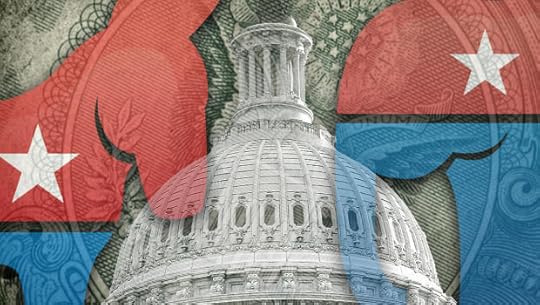
From NOW w/ Alex Wagner
Where were we before Boehner’s Plan B?
The NOW panel – including New York Magazine’s Jonathan Chait, the Grio’s Joy-Ann Reid, the New York Times’ Nick Confessore, CNBC’s John Harwood and author Catherine Crier – discusses the latest in the fiscal cliff proceedings.
Gun regulation: One step forward, many steps back
Will new concern about gun control after the Sandy Hook massacre spur legislators into action, or will people’s concern dwindle with the media’s coverage? Nicholas Confessore, Joy-Ann Reid, Jonathan Chait, and Catherine Crier discuss the NRA’s agenda and whether or not they’ve artificially frozen the debate on gun control.
Cabinet caution: Does Chuck Hagel stand a chance?
By opposing George W. Bush’s 2007 Iraq surge, former Senator Chuck Hagel endeared himself to anti-war Democrats but lost a lot of Republican support. Now Hagel, potentially President Obama’s pick for the next Secretary of Defense, is getting flak from Republicans and even some Democrats for his views on Israel, Iran, and his previous comments on gay rights.
NOW’s Best Moments of 2012
From angry attack muffins to fetching holiday sweaters and how to get your “wag’ on, a look back at the year at NOW.
Visit NBCNews.com for breaking news, world news, and news about the economy

December 26, 2012
Frank Luntz: NRA not listening to public
Banning the ownership of assault and semi-automatic weaponry DOES NOT infringe upon the Second Amendment right to bear arms. NRA members polled by GOP strategist Frank Luntz suggest that a majority of gun owners are in favor of more sensible laws.
The NRA’s lobbying efforts are designed to protect the interests of gun manufacturers, not the public. When will capital-R Reason surmount the influence of big business?

From The Huffington Post
Frank Luntz, GOP Pollster: The NRA Isn’t Listening With Proposal For Armed Guards At Schools
By Nick Wing
Frank Luntz, a top Republican strategist and pollster, said Wednesday that the National Rifle Association’s recent calls for armed guards to be stationed at every school in the wake of the Newtown, Conn. massacre suggested the organization isn’t listening to public opinion on the issue.
“The public wants guns out of the schools, not in the schools, and they’re not asking for a security official or someone else,” Luntz said on CBS’s “This Morning,” responding to a proposal first floated by top NRA lobbyist Wayne LaPierre during a press conference last week.
“I don’t think the NRA is listening. I don’t think that they understand,” Luntz continued. “Most Americans would protect the Second Amendment rights and yet agree with the idea that not every human being should own a gun, not every gun should be available at anytime, anywhere, for anyone. That at gun shows, you should not be able to buy something there and then without any kind of check whatsoever. What they’re looking for is a common-sense approach that says that those who are law-abiding should continue to have the right to own a weapon, but that you don’t believe the right should be extended to everyone at every time for every type of weapon.”
Luntz conducted a survey of gun owners both affiliated and unaffiliated with the NRA earlier this year, which found broad support for certain provisions that would restrict the sale of guns.
Among NRA members, 74 percent said they support background checks as a requirement for concealed carry permits. Recent polls of the broader American populace have showed higher levels of support for that and other gun control measures which the NRA has historically opposed.

December 19, 2012
Guns reduce and restrict liberty; they do not ensure our way of life.
President Dwight D. Eisenhower saw the national security implications of corporate influence on government, democracy, and civil society. He echoed Lincoln’s warnings in his farewell address to the nation on January 17, 1961:
A vital element in keeping the peace is our military establishment. Our arms must be mighty, ready for instant action, so that no potential aggressor may be tempted to risk his own destruction…
This conjunction of an immense military establishment and a large arms industry is new in the American experience. The total influence — economic, political, even spiritual — is felt in every city, every statehouse, every office of the federal government. We recognize the imperative need for this development. Yet we must not fail to comprehend its grave implications. Our toil, resources and livelihood are all involved; so is the very structure of our society. In the councils of government, we must guard against the acquisition of unwarranted influence, whether sought or unsought, by the military-industrial complex. The potential for the disastrous rise of misplaced power exists, and will persist.
We must never let the weight of this combination endanger our liberties or democratic processes. We should take nothing for granted. Only an alert and knowledgeable citizenry can compel the proper meshing of the huge industrial and military machinery of defense with our peaceful methods and goals so that security and liberty may prosper together.
The following New York Times op-ed written by Firmin Debrabander is right on the money. Guns reduce and restrict liberty; they do not ensure our way of life.
The Freedom of an Armed Society
By FIRMIN DEBRABANDER
The night of the shootings at Sandy Hook Elementary School in Newtown, Conn., I was in the car with my wife and children, working out details for our eldest son’s 12th birthday the following Sunday — convening a group of friends at a showing of the film “The Hobbit.” The memory of the Aurora movie theatre massacre was fresh in his mind, so he was concerned that it not be a late night showing. At that moment, like so many families, my wife and I were weighing whether to turn on the radio and expose our children to coverage of the school shootings in Connecticut. We did. The car was silent in the face of the flood of gory details. When the story was over, there was a long thoughtful pause in the back of the car. Then my eldest son asked if he could be homeschooled.
That incident brought home to me what I have always suspected, but found difficult to articulate: an armed society — especially as we prosecute it at the moment in this country — is the opposite of a civil society.
The Newtown shootings occurred at a peculiar time in gun rights history in this nation. On one hand, since the mid 1970s, fewer households each year on average have had a gun. Gun control advocates should be cheered by that news, but it is eclipsed by a flurry of contrary developments. As has been well publicized, gun sales have steadily risen over the past few years, and spiked with each of Obama’s election victories.
Furthermore, of the weapons that proliferate amongst the armed public, an increasing number are high caliber weapons (the weapon of choice in the goriest shootings in recent years). Then there is the legal landscape, which looks bleak for the gun control crowd.
Every state except for Illinois has a law allowing the carrying of concealed weapons — and just last week, a federal court struck down Illinois’ ban. States are now lining up to allow guns on college campuses. In September, Colorado joined four other states in such a move, and statehouses across the country are preparing similar legislation. And of course, there was Oklahoma’s ominous Open Carry Law approved by voters this election day — the fifteenth of its kind, in fact — which, as the name suggests, allows those with a special permit to carry weapons in the open, with a holster on their hip.
Individual gun ownership — and gun violence — has long been a distinctive feature of American society, setting us apart from the other industrialized democracies of the world. Recent legislative developments, however, are progressively bringing guns out of the private domain, with the ultimate aim of enshrining them in public life. Indeed, the N.R.A. strives for a day when the open carry of powerful weapons might be normal, a fixture even, of any visit to the coffee shop or grocery store — or classroom.
As N.R.A. president Wayne LaPierre expressed in a recent statement on the organization’s Web site, more guns equal more safety, by their account. A favorite gun rights saying is “an armed society is a polite society.” If we allow ever more people to be armed, at any time, in any place, this will provide a powerful deterrent to potential criminals. Or if more citizens were armed — like principals and teachers in the classroom, for example — they could halt senseless shootings ahead of time, or at least early on, and save society a lot of heartache and bloodshed.
As ever more people are armed in public, however — even brandishing weapons on the street — this is no longer recognizable as a civil society. Freedom is vanished at that point.
And yet, gun rights advocates famously maintain that individual gun ownership, even of high caliber weapons, is the defining mark of our freedom as such, and the ultimate guarantee of our enduring liberty. Deeper reflection on their argument exposes basic fallacies.
In her book “The Human Condition,” the philosopher Hannah Arendt states that “violence is mute.” According to Arendt, speech dominates and distinguishes the polis, the highest form of human association, which is devoted to the freedom and equality of its component members. Violence — and the threat of it — is a pre-political manner of communication and control, characteristic of undemocratic organizations and hierarchical relationships. For the ancient Athenians who practiced an incipient, albeit limited form of democracy (one that we surely aim to surpass), violence was characteristic of the master-slave relationship, not that of free citizens.
Arendt offers two points that are salient to our thinking about guns: for one, they insert a hierarchy of some kind, but fundamental nonetheless, and thereby undermine equality. But furthermore, guns pose a monumental challenge to freedom, and particular, the liberty that is the hallmark of any democracy worthy of the name — that is, freedom of speech. Guns do communicate, after all, but in a way that is contrary to free speech aspirations: for, guns chasten speech.
This becomes clear if only you pry a little more deeply into the N.R.A.’s logic behind an armed society. An armed society is polite, by their thinking, precisely because guns would compel everyone to tamp down eccentric behavior, and refrain from actions that might seem threatening. The suggestion is that guns liberally interspersed throughout society would cause us all to walk gingerly — not make any sudden, unexpected moves — and watch what we say, how we act, whom we might offend.
As our Constitution provides, however, liberty entails precisely the freedom to be reckless, within limits, also the freedom to insult and offend as the case may be. The Supreme Court has repeatedly upheld our right to experiment in offensive language and ideas, and in some cases, offensive action and speech. Such experimentation is inherent to our freedom as such. But guns by their nature do not mix with this experiment — they don’t mix with taking offense. They are combustible ingredients in assembly and speech.
I often think of the armed protestor who showed up to one of the famously raucous town hall hearings on Obamacare in the summer of 2009. The media was very worked up over this man, who bore a sign that invoked a famous quote of Thomas Jefferson, accusing the president of tyranny. But no one engaged him at the protest; no one dared approach him even, for discussion or debate — though this was a town hall meeting, intended for just such purposes. Such is the effect of guns on speech — and assembly. Like it or not, they transform the bearer, and end the conversation in some fundamental way. They announce that the conversation is not completely unbounded, unfettered and free; there is or can be a limit to negotiation and debate — definitively.
The very power and possibility of free speech and assembly rests on their non-violence. The power of the Occupy Wall Street movement, as well as the Arab Spring protests, stemmed precisely from their non-violent nature. This power was made evident by the ferocity of government response to the Occupy movement. Occupy protestors across the country were increasingly confronted by police in military style garb and affect.
Imagine what this would have looked like had the protestors been armed: in the face of the New York Police Department assault on Zuccotti Park, there might have been armed insurrection in the streets. The non-violent nature of protest in this country ensures that it can occur.
Gun rights advocates also argue that guns provide the ultimate insurance of our freedom, in so far as they are the final deterrent against encroaching centralized government, and an executive branch run amok with power. Any suggestion of limiting guns rights is greeted by ominous warnings that this is a move of expansive, would-be despotic government. It has been the means by which gun rights advocates withstand even the most seemingly rational gun control measures. An assault weapons ban, smaller ammunition clips for guns, longer background checks on gun purchases — these are all measures centralized government wants, they claim, in order to exert control over us, and ultimately impose its arbitrary will. I have often suspected, however, that contrary to holding centralized authority in check, broad individual gun ownership gives the powers-that-be exactly what they want.
After all, a population of privately armed citizens is one that is increasingly fragmented, and vulnerable as a result. Private gun ownership invites retreat into extreme individualism — I heard numerous calls for homeschooling in the wake of the Newtown shootings — and nourishes the illusion that I can be my own police, or military, as the case may be. The N.R.A. would have each of us steeled for impending government aggression, but it goes without saying that individually armed citizens are no match for government force. The N.R.A. argues against that interpretation of the Second Amendment that privileges armed militias over individuals, and yet it seems clear that armed militias, at least in theory, would provide a superior check on autocratic government.
As Michel Foucault pointed out in his detailed study of the mechanisms of power, nothing suits power so well as extreme individualism. In fact, he explains, political and corporate interests aim at nothing less than “individualization,” since it is far easier to manipulate a collection of discrete and increasingly independent individuals than a community. Guns undermine just that — community. Their pervasive, open presence would sow apprehension, suspicion, mistrust and fear, all emotions that are corrosive of community and civic cooperation. To that extent, then, guns give license to autocratic government.
Our gun culture promotes a fatal slide into extreme individualism. It fosters a society of atomistic individuals, isolated before power — and one another — and in the aftermath of shootings such as at Newtown, paralyzed with fear. That is not freedom, but quite its opposite. And as the Occupy movement makes clear, also the demonstrators that precipitated regime change in Egypt and Myanmar last year, assembled masses don’t require guns to exercise and secure their freedom, and wield world-changing political force. Arendt and Foucault reveal that power does not lie in armed individuals, but in assembly — and everything conducive to that.

Firmin DeBrabander is an associate professor of philosophy at the Maryland Institute College of Art, Baltimore and the author of “Spinoza and the Stoics.”

December 10, 2012
Highly Secretive Trade Agreement Designed to Exempt Multinational Corporations from Domestic Law
Leaked documents coming out of Trans-Pacific Partnership negotiations need greater public exposure before it is too late. Over the past two years, the United States has been meeting behind closed doors with eight Pacific nations, drafting an agreement designed to exempt multinational corporations from legal recourse if they violate domestic laws. If the leaks are anything at all representative of Trans-Pac’s final outcome, this agreement will set a dangerous precedent for government abdication of national interests to global corporatism.
We know that ‘hard to explain’ stories are sometimes ignored by mainstream media, but this could be a major game changer for the future of democratic self-governance, Rule of Law, and the ability of US citizens and political representatives to protect our national sovereignty. If you’re not getting more information on this story from sources you trust, you must demand a thorough investigation into how this dangerous trade agreement will limit our ability to hold foreign corporations accountable for activities on U.S. soil.
Dragging Secretive Trade Talks Into the Light: Activists Expose Slow-Motion Corporate Coup
A highly secretive trade agreement aims to penalize countries that protect workers, consumers, and the environment. Luckily, the growing opposition goes beyond the usual trade justice suspects.
YES! Magazine / By Lori WallachLeaders from member states of the Trans-Pacific Strategic Economic Partnership Agreement.
While the election season seized everyone’s attention, government officials and 600 official corporate “advisors” were working behind closed doors to complete the Trans-Pacific Partnership (TPP).
Negotiations have been cloaked in unprecedented secrecy and its proponents have mislabeled the TPP as a “free trade” agreement. In reality, the TPP is about much more than trade. It threatens a stealthy, slow-motion corporate coup d’etat, formalizing and locking in corporate rule over most aspects of our lives.
Thirteen years ago, at the World Trade Organization’s (WTO) Seattle Ministerial, a similar threat in the form of a massive expansion of the powers and scope of the WTO was stopped.
At the Battle in Seattle, the immovable object called grassroots democracy was victorious over the allegedly unstoppable force of corporate-led globalization. The “Doha Round,” which followed two years later and continued the attempt to expand the WTO’s reign, was also derailed thanks to tenacious campaigning by organizations and activists worldwide.
Recalling these historic moments, when people power stopped the dangerous expansion of corporate power, is especially sweet today, when we must again act to safeguard these inspiring victories. All of us who will live with the results must become active to stop the TPP, the latest iteration of corporate coup via “trade” agreement.
What Would the TPP Do?
Eleven countries are now involved—Australia, Brunei Darussalam, Canada, Chile, Malaysia, Mexico, New Zealand, Peru, Singapore, Vietnam, and the United States—and there is an open invitation for more to join. Think of the TPP as a NAFTA on steroids, which could encompass half of the world.
This is the largest, most potentially damaging agreement since the 1995 establishment of the WTO. And you may never have heard about it before. That’s because the negotiations, which have been underway for three years, are being conducted in extreme secrecy. The public, Congress, and the press are locked out, but the 600 official corporate advisors have access to the negotiating texts.
The TPP is the latest strategy by the same gang who got us into the North American Free Trade Agreement (NAFTA) and pushed for the expansion of the WTO: American job-offshorers like GE and Caterpillar; banksters like Citi; pharmaceutical price-gouging giants like Pfizer; oil, gas, and mining multinationals like Chevron and Exxon; and agribusiness monopolists like Cargill and Monsanto.
They’ve misbranded the TPP as a model 21st-Century “trade” deal to try to sell it with the usual false promises of it expanding exports. But only two of the TPP’s 29 chapters are about “trade.”
Most of the TPP’s proposed provisions instead comprise a corporate power grab. The TPP would include extreme protections for foreign investors, which would help corporations offshore American jobs to low-wage countries. These terms would require governments to provide foreign investors a guaranteed “minimum standard of treatment” when they relocate, including special privileges and rights that domestic firms and investors do not enjoy. Foreign firms—or foreign subsidiaries of U.S. firms—could extract unlimited amounts of taxpayer money as compensation when investors claim that U.S. government actions undermine a corporation’s expected future profits. Seriously.
Equal Status for Corporations and Country
The investor rules would elevate individual foreign firms and investors to the same status as the sovereign nations that would be party to the TPP. Corporations and investors would be empowered to privately enforce the agreement by suing a signatory government before the World Bank and other foreign tribunals. In this “investor-state dispute resolution,” three private-sector lawyers, who rotate between suing governments and acting as “judges,” could order governments to pay large amounts of our tax dollars to investors who do not want to follow the same laws as domestic firms.
Under similar, if less grandiose, provisions in NAFTA, investors have been paid hundreds of millions of dollars in cases attacking bans on toxic chemicals, land use rules, and more. Phillip Morris Asia has attacked Australia’s cigarette plain packing law—which requires that health warnings be included in cigarette packaging—before such a tribunal. Australia announced in April that it will not agree to be bound to the investor-state regime in the TPP. Negotiators from the United States have declared that all TPP nations must submit to this regime.
Either by winning an investor-state dispute or by preemptively putting a chill on government actions to address critical public needs, the TPP’s investor rights would impose an outer bound of the possible for communities and countries setting policies related to health, the environment, water, or other natural resources. There is almost no progressive movement or campaign whose goals are not threatened, while vast swaths of public-interest policy achieved through decades of struggle are poised to be undermined as these attacks proliferate.
Progressive Achievements Rolled Back
The TPP would also ban existing and future “Buy Local” and “Buy American” procurement policies. These are rules that direct federal and state governments to reinvest our tax dollars to create American jobs by buying domestically made cars, steel, food, and more, and by giving contracts to local construction firms or call centers firms.
The TPP also would expose to attack green and sweat-free procurement rules that specify that only recycled paper, non-old-growth wood products, renewable-source energy, or products made under fair labor standards can be purchased with government funds. Under these terms, democracies would no longer be able to decide that we want to invest our tax dollars to create jobs at home or to create markets for green energy or morally produced goods. Instead, the TPP would require our governments to send our money offshore and spend it with firms trashing human rights and the environment.
The TPP would limit financial regulation by forbidding bans on risky derivatives and other dangerous financial products, as well as the use of capital controls to counter wild surges of speculative investments in and out of countries, which destabilize the global economy. The massive financial firms that caused the financial crisis could use these terms to roll back the new financial regulations implemented in the U.S. and around the world.
As far as health care goes, the TPP would grant new monopoly privileges to Big Pharma that would jack up medicine prices and cut consumers’ access to life-saving medicines in the developing countries involved in the TPP. There is a proposal to allow pharmaceutical firms to challenge the pricing decisions of cost-saving drug formularies, which are used by developing countries and, increasingly, by the United States, to bargain for better prices with drug firms.
One chapter would even attack Internet freedom by imposing through the backdoor damaging aspects of the Stop Online Piracy Act (SOPA), which citizen activism derailed in the U.S. Congress.
A Trade Justice Coalition Emerges (Again)
That’s only the tip of the iceberg. But it’s precisely the extreme nature of the TPP corporate wish list that is its greatest vulnerability—and our greatest opportunity. The 1-percenter TPP agenda would harm most of us in the United States and in the other countries involved. It can only survive if left shrouded in darkness. Citizen activists in many of the TPP countries are building an inspiring global movement implementing the “Dracula strategy” to drag the TPP into the sunshine so those who will have to live with its consequences can know what’s coming and take action.
Civil society groups representing millions of members worldwide have joined together in raising the alarm. And, given the stunning audacity of the TPP’s prospective corporate power grab, activism is reaching beyond the environmental, consumer, labor, family farm, and access to medicines groups who have been the mainstay of movements against past “trade” agreement attacks. Amnesty International, the American Civil Liberties Union, Avaaz, Consumers International, tobacco controls groups, and many other organizations have become involved.
From the United States to Australia and even to Malaysia (where any public gathering the authorities consider to be a protest is illegal and participants are subject to arrest), protests are growing. Outside each posh resort where TPP negotiators meet behind closed doors, citizens gather to chant “Flush the TPP,”“Release the Text,” and “Peoples’ Needs, Not Corporate Greed!”
At the next round of negotiations, which will be held in early December in Auckland, New Zealand, negotiators hope to finish several chapters of the deal, so they can sign the whole thing in the first quarter of 2013.
Each of us can make a difference. Given the threats that the TPP poses to a stunningly broad range of fundamental rights and public needs, this is a fight—like the Battle in Seattle in 1999—that can unite a powerful coalition of movements. And it is people power that will be victorious against the TPP corporate power grab, if you help spread the word.
Lori Wallach wrote this article for YES! Magazine, a national, nonprofit media organization that fuses powerful ideas with practical actions. A Harvard-trained lawyer, Ms. Wallach has promoted the public interest regarding globalization and international commercial agreements in every forum: Congress and foreign parliaments, the courts, government agencies, and the media. She is director of Public Citizen’s Global Trade Watch.
Interested?
Treaty Like It’s 1999: Connecting the Dots on Trade
From Japan, Raj Patel on the expansion of the Trans-Pacific trade agreement and the homegrown battle to stop it.
The Tricks of the Trade Deals
Three new agreements are predicted to kill jobs and solidify corporate power. It’s our turn to have a say in how we trade.
WTO Rules Against Labeling Meat
Now the U.S. has to gut a law that protects consumers from imported mystery meat—or pay the price.

December 8, 2012
Fracking Research at UT Austin Withdrawn Following Independent Review
Finally, a major university recognized a major bias in its science. An independent review by science administrators found that the head of the Energy Institute at the University of Texas received money from a firm involved in hydraulic fracturing for shale gas prior to releasing a report on its potential environmental impacts. After the review was recently made public, the paper was finally withdrawn, and the head of the Energy Institute accepted full responsibility and resigned.
Today, public education is under familiar economic pressures to conform to narrow standards and offer subjective knowledge. Interest groups are clamoring to insert their agenda’s into both the classroom and scientific studies. Steps such as those taken by the University of Texas at Austin might serve as a guideline for how ethical issues in our public institutions can be addressed justly without compromising the public’s trust.
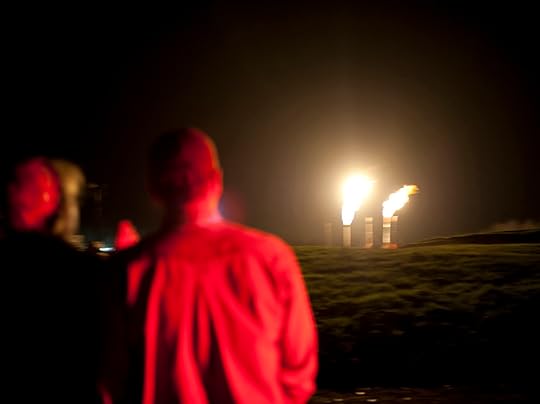
From Andrew Revkin’s Dot Earth
Damning Review of Gas Study Prompts a Shakeup at the University of Texas
By ANDREW C. REVKINThe University of Texas said today that it has accepted the findings of a damning independent review of the preparation of a report on potential impacts of shale gas drilling by the school’s Energy Institute. The school said it will undertake six recommended actions, the most significant being the withdrawal of papers from the Energy Institute’s Web site related to the report until they are submitted for fresh expert review.
In its news release, the university said that the lead investigator, Professor Chip Groat, retired last month and the institute’s director, Raymond Orbach, resigned. [*There's more from the StateImpact Texas reporting projecthere.]
The independent review, by a trio of noted science administrators and scholars, expressly did not examine the quality of the study’s findings, but focused on issues related to its creation — particularly what it deemed to be serious problems with undisclosed financial interests (earlier Dot Earth coverage is here). [Dec. 7, 4:37 p.m. | Update | Although the authors wrote that they were not tasked with evaluating the contents, a Dot Earth reader, "JD," pointed to a searing section of the summary (page 14) that I missed in my quick scan late yesterday; see the bottom of this post for the excerpt.]
Click here to read or download the full report: “A review of the processes of preparation and distribution of the report “Fact-Based Regulation for Environmental Protection in Shale Gas Development.”
Here’s the section of the report recommending the withdrawal of the gas study, followed by the text of the news release:
Because of the inadequacies herein cited, publications resulting from the Energy Institute’s project on shale gas fracturing currently displayed on the Energy Institute’s website should be withdrawn and the document “Separating Fact from Fiction in Shale Gas Development,” given its basis in the above, should not be further distributed at this time. Authors of the white papers should be allowed sufficient time and opportunity to finish their work, preparing their papers for submission for independent review by a broad panel of independent scientists and policy experts. Even if not published in a professional journal this approach is deemed appropriate when dealing with highly contentious issues. The summary paper should be redrafted to accurately reflect these revised white papers, with strong involvement from the Senior Contributors.
Here’s an excerpt from the news release:
The University of Texas at Austin recently received and agreed with the findings of an independent panel of national experts that reviewed the preparation and distribution of a 2012 UT Energy Institute report on Shale Gas Development, on which Professor Charles Groat served as principal investigator. The independent review was not commissioned to assess the merits or liabilities of hydraulic fracturing but the process through which the report was prepared and distributed.
It is also important to note that the content of the report — a synthesis of various white papers written about hydraulic fracturing — was not under review for validation or criticism and that the panel “found no evidence of intentional misrepresentation” by the authors.
The panel cited failures and inadequacies in several procedural areas and made six recommendations, all of which will be implemented by UT Austin. As a result of these findings, The University of Texas at Austin will work with the UT System Administration to conduct a compliance review for the purposes of improving internal procedures as they relate to the university’s conflict of interest, conflict of commitment, and financial and relationship disclosures. [Read the rest.]
If credibility is the goal, transparency is vital in research involving related industries.
See the fate of the Shale Resources and Society Institute at the State University of New York at Buffalo earlier this year for another case study in getting this wrong.
[*Here's the excerpt from the summary noted above:
The report summary failed to reflect either the tentative nature of the conclusions reached in the white papers or the often strong caveats conveyed by their individual authors. The Review Committee viewed the summary document, subsequent media releases, and oral presentations to be inappropriately selective in the use of material from the white papers such that they seemed to suggest that public concerns were without scientific basis and largely resulted from media bias—hence requiring no significant modification in the current regulatory and enforcement regimes. This apparent distortion of the substance of the white papers became increasingly evident as the project moved through the stages of drafting the summary, media releases, and public presentations.]
[* Asterisks mark material added after publication.]

December 6, 2012
Corporate Profits Reach Highest Percentage of GDP On Record as Total Wages Fall to Record Low
What’s good for corporations is not always good for the country, its people, or the capitalist system we allegedly defend; it’s time we make the distinctions. A little more than two years after the 2008 financial crisis, corporate profits were hitting record highs and our gross domestic product was growing again.
Today, our nation’s fiscal health depends more on increased consumption than on the production of goods and services. But average real wages for most workers have stagnated or fallen over the last thirty-five years, and good jobs are disappearing. Just look at the Commerce Department’s latest GDP report, which shows corporate profits have hit their highest percentage of GDP on record at the same time as total wages have fallen to a record low. Without employment or income, what’s the key to our economic recovery?
From CNNMoney
Corporate profits hit record as wages get squeezed
By Chris Isidore
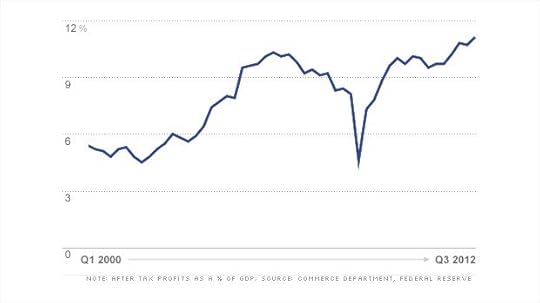
Corporate profits hit their highest percentage of GDP on record in the third quarter.
NEW YORK (CNNMoney)
Just four years after the worst shock to the economy since the Great Depression, U.S. corporate profits are stronger than ever.
In the third quarter, corporate earnings were $1.75 trillion, up 18.6% from a year ago, according to last week’s gross domestic product report. That took after-tax profits to their greatest percentage of GDP in history.
But the record profits come at the same time that workers’ wages have fallen to their lowest-ever share of GDP.
“That’s how it works,” said Robert Brusca, economist with FAO Research in New York, who said there is a natural tension between profits and the cost of labor. “If one gets bigger, the other gets smaller.”
Profits accounted for 11.1% of the U.S. economy last quarter, compared with an average of 8% during the previous economic expansion. They fell as low as 4.6% of GDP during the recession.
“Corporate profits took a big hit in the recession like everything else, but they’ve seen a massive bounce back,” said Heidi Shierholz, an economist with the Economic Policy Institute, a liberal think tank. “Wages are determined by what’s going on in the labor market and we haven’t seen a big bounce back there.”
A separate government reading shows that total wages have now fallen to a record low of 43.5% of GDP. Until 1975, wages almost always accounted for at least half of GDP, and had been as high as 49% as recently as early 2001.
But overall economic growth has greatly outpaced growth in hourly wages and job creation since the end of Great Recession, so workers’ share of the economic pie has dropped steadily. That’s despite the fact that modest hiring by employers lifted total wages to a record $6.88 trillion in the third quarter.
“It’s not because bad capitalists are keeping all the money,” said Brusca. He said that businesses with high labor costs have either gone under or moved offshore.
Shierholz said she doesn’t think it’s bad that business profits have risen. But the downward pressure on wages is hurting consumers’ ability to spend, and thus the need for businesses to hire more people.
“[Businesses] have a capacity to employ more people, but it makes no sense to hire more people until you have demand for your stuff,” she said.

November 30, 2012
Infrastructure Spending Produces Big Returns for All Americans
Our public dollars are well spent creating platforms on which private enterprise can prosper. With interest rates at nearly zero, low labor costs, and the construction industry with all its suppliers scrambling for work, we should be pouring stimulus dollars into our schools, roads, and bridges. We should be building a new energy grid and sending wireless technology into every corner of the land. These are the measures that will produce big returns for all Americans.
With the economy recovering slowly and our nation’s roads and bridges crumbling, a new study from the San Francisco Federal Reserve found that making investments into infrastructure has substantial short- and medium-term benefits for the economy. Read their findings here or look below for a quick recap of the study and share your thoughts.
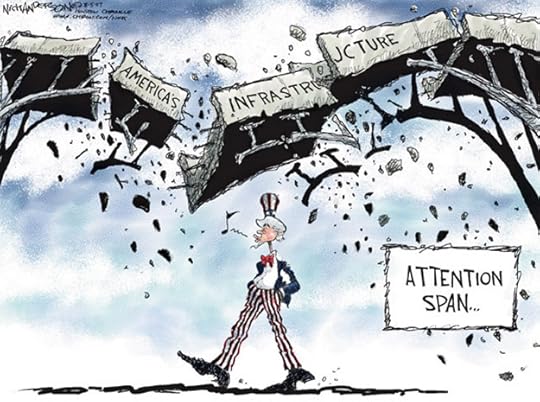
From Business Insider
STUDY: Every $1 Of Infrastructure Spending Boosts The Economy By $2
A recently published working paper from the San Francisco Fed shows that the fiscal multiplier of infrastructure spending is much larger than the typical government spending multiplier.
Sylvain Leduc and Daniel Wilson studied the effect of unexpected infrastructure grants on state GDPs (GSPs) since 1990 and found that, on average, each dollar of infrastructure spending increases the GSP by at least two dollars. Valerie Ramey, Professor of Economics at UC San Diego and member of the National Bureau of Economic Research, reports that the typical fiscal multiplier is between 0.5 and 1.5.
Leduc and Wilson note that their results serve as a validation of Keynesian economics:
We find that unanticipated increases in highway spending have positive but temporary effects on GSP, both in the short and medium run. The short-run effect is consistent with a traditional Keynesian channel in which output increases because of a rise in aggregate demand, combined with slow-to-adjust prices. In contrast, the positive response of GSP over the medium run is in line with a supply-side effect due to an increase in the economy’s productive capacity.
What’s more, their study showed that the multiplier increases during a downturn. Leduc and Wilson found that the multiplier in the wake of the 2009 stimulus was “roughly four times” more than average. That means infrastructure investments offer more value during busts than booms, which should encourage policymakers attempting to counteract high unemployment in the construction sector by increasing spending on highways, roads, and bridges.


